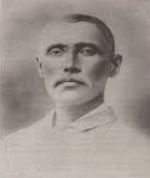Bedsheets (sábanas) of the three Manuels
 These notes were issued under the Zapatista Provisional State Government, headquartered in the city of Misantla for approximately six months. In what may have been a precursor to this issue, on 28 May 1915 the Jefe del Movimiento Revolucionario del Estado de Veracruz, General Zeferino Rodríguez, in Misantla, wrote to Emiliano Zapata asking him for permission to issue bonos for $1 and $2, under the responsibility of the Tesorería General of the state, to cover the pressing demands of his troopsAGN, Colección Cuartel General del Sur, 187762/64, f2.
These notes were issued under the Zapatista Provisional State Government, headquartered in the city of Misantla for approximately six months. In what may have been a precursor to this issue, on 28 May 1915 the Jefe del Movimiento Revolucionario del Estado de Veracruz, General Zeferino Rodríguez, in Misantla, wrote to Emiliano Zapata asking him for permission to issue bonos for $1 and $2, under the responsibility of the Tesorería General of the state, to cover the pressing demands of his troopsAGN, Colección Cuartel General del Sur, 187762/64, f2.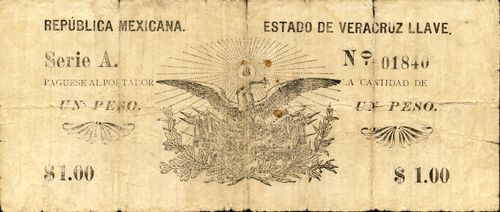
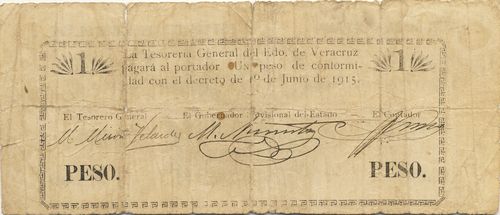 M3993 $1 Tesorería General del Estado
M3993 $1 Tesorería General del Estado
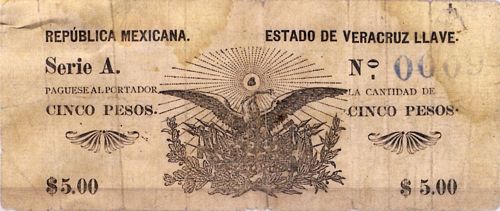 M3994 $5 Tesorería General del Estado
M3994 $5 Tesorería General del Estado
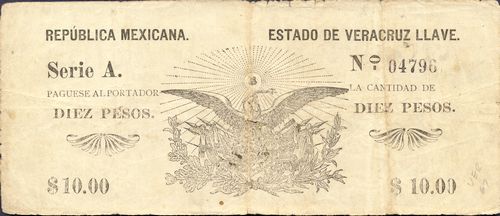
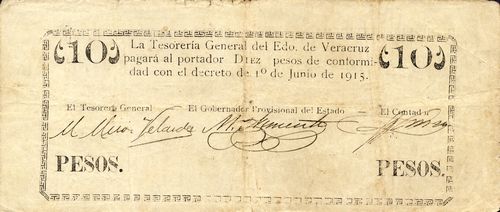 M3995 $10 Tesorería General del Estado
M3995 $10 Tesorería General del Estado
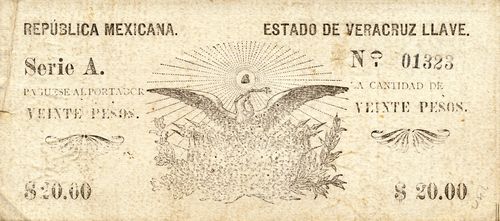
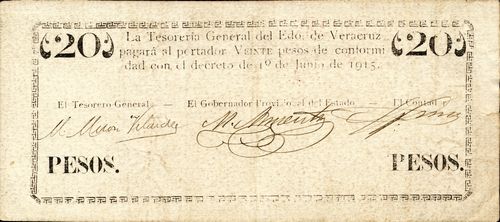 M3996 $20 Tesorería General del Estado
M3996 $20 Tesorería General del Estado
| series | to | from | total number |
total value |
||
| $1 | A | includes numbers 00955 to 05410 | ||||
| $5 | A | includes numbers 0009 to 0294 | ||||
| $10 | A | includes numbers 00954CNBanxico #12290 to 06217CNBanxico #6475 | ||||
| $20 | A | includes numbers 00600 to 01477 |
There were four denominations, all in series A. The impressions, designs, and numbers were printed in black ink although the numbers often appear blue. The signatures were also printed in black ink. The stencils were engraved in the city of Xalapa and printed in the “Le Imprime” printshop in Misantla. This printshop was owned by Professor Pedro Ramírez Olivares and was controlled by the government for the production of these notes. Later the press was dismantled and carried to the town of Juchique, for use under the printer Eduardo Viñas.
The paper used in the printing was a coarse stock of poor quality paper, measuring on average 72mm wide and 170mm long. The format varied only as to denomination.
The legend on the reverse reads “La Tesorería General del Edo. de Veracruz pagará al portador ….de conformidad con el decreto de 1o de Junio de 1915[text needed]” and the notes are signed by Manuel Mirón Velorde as Tesorero General, Manuel Armenta as Gobernador Provisional del Estado and Manuel Roselló Gil as Contador.
|
Everything was going well for Armenta until the arrival of Adalberto Tejeda as governor, who undertook a fierce fight against latifundism, promoting the creation of ejidos. Seeing that his heritage, the product of many years of efforts, struggles and sacrifices, was lost, Manuel Armenta retired to the city of Puebla, where he died on 27 June 1927, when his latifundia were already converted into ejido plots. |
 |
| Manuel Mirón Velarde was a native of the town of Paso de Novillos (today Martínez de la Torre). He originally worked for the Constitutionalist Government but left to join the Zapatistas. |  |
| Manuel Roselló Gil, from Misantla, served as paymaster of the Provisional Government. Before his affiliation with the Zapatistas he was employed by the administration of the Constitutionalist Government under the direction of Governor Teodoro A. Dehesa. | 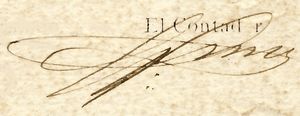 |
These very crude, simple notes circulated in the region and were known by the people as "the bedsheets of the three Manuels."
(based on Manuel Muslera Muslera, "Las sábanas de los tres Manueles" in Plus Ultra, 173, February 1978, Vol. XV, No 6, 1978)

